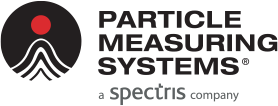Pharmaceutical companies are manufacturers of both solid and liquid formulations. Solid formulations are tablets, dry powers, confectionery, and some solid injectables. Liquid formulations, historically known as parenteral solutions, are now described as injectable solutions or injectables. They include opthalmics, ointments, I.V., vaccines, and others. Injectable solutions are packed as Large Volume Injectable (LVI) solutions, Small Volume Injectable (SVI) solutions, and dry powders requiring reconstitution as either LVI or SVI but most commonly as SVI.
If the solution is a sterile formulation it must be free of all visible particulate material as well as of smaller particles. Particulate material refers to mobile solids unintentionally present in parenteral products. These solids may consist of individual components or mixtures of cellulose, glass, or rubber cores from vials, metal, or plastic fragments. Sterile suspensions may have particulate material but these are usually the active drug or an ingredient, not contaminants.
Particle Counting in Injectable Solutions History
It has been shown that control over the limits of these non-soluble particles is important to human health as they can prove to be deleterious to human health at unsafe levels for several reasons, including:
- Chemical Reaction – The burden of particles are chemically incompatible with the arterial system of the body, essentially poisoning the patient.
- Pulmonary Aneurism – The particle is of sufficient size that it becomes entrapped in the arterial system, causing a physiological effect.
- Hypertension – The body rejects the foreign matter and encourages the immune system to work excessively causing secondary effects.
Limits of these particles are defined in USP 42 (2018) as the following:
- 6,000 counts per container @ 10 µm
- 600 counts per container @ 25 µm
Particle Counting in Injectable Solutions Requirements
The United States Pharmacopoeia (USP) Test Section <788> defines the allowable limits of noninfectious contaminants, i.e., those particulate materials which may be present and, therefore, considered safe for IV administration. Specific limits are set forth for particles above 10 and 25 µm. The USP directive applies to all large volume solutions intended for single-dose infusion that is ready for use from the manufacturer.
EP 5.1 requires that “For preparations for human use, solutions for infusion or solutions for injection (must) comply with this test.” Therefore, all preparations (LVI and SVI) must meet the EP 5.0 requirement. It also identified that intramuscular and subcutaneous products are allowed higher limits, and that radiopharmaceuticals and those with final filtration are exempt from testing.
Japanese Pharmacopoeia (JP) requires that insoluble particles are tested for either in the finished products or the transportation media is tested independently, but all large and small volume injectables must conform to the test.
Solutions for Particle Counting in Injectable Solutions
Automated particle counting is predominantly performed by an optical (light obscuration) laser particle counter system, such as the LiQuilaz II liquid particle counter in the APSS 2000 system. The LiQuilaz operates on the principle that the light extinguished by a particle in a liquid within a classical laser beam is a direct function of its area. Particles obscure the laser beam during transit through the beam. The pulses produced by electronically detecting the total laser light minus the light obscured by the particle are used to size the particle. These pulses are measured by an analog to digital converter in the sensor. The liquid is presented to the optical system through a rectangular capillary.
The capillary has a window attached to both the front and back sides, which are coated to reduce reflections. The whole system is controlled by a central software application, which controls the hardware, analyzes the data, and stores data for future interpretation. The variation in light caused by the passing of a particle is electronically detected by the photodetector. This signal is then amplified and converted to its digital equivalent. The value of this digital signal is converted into an equivalent particle size in a microprocessor. The different size particles are counted and stored in the microprocessor and made available for transmission to the data display system upon request.
The LiQuilaz II particle sensor is validated to perform the Pharmacopoeia tests they are challenged to various tests with defined acceptance criteria. These IQ and OQ (Installation and Operational Qualification) tests challenge the following areas:
- Sample Volume Accuracy
- Sample Flow Rate
Once the validated system is calibrated (see the full paper for details), it is ready to measure the particle count levels in the parenteral sample. The LiQuilaz II particle sensor from Particle Measuring Systems (PMS) is easily configured in the SamplerSight-Pharma software to match the criteria of testing required and a recipe can be defined and saved for future runs of a similar product or batch. The data can then used to prove the particle matter contamination values for the product.
Learn more… Download the full paper
RELEVANT CONTENT
https://www.pmeasuring.com/webinars/complying-with-usp-729-usp-788-1788/
https://www.pmeasuring.com/products/liquid-particle-counters/particle-counter-usp-788/

